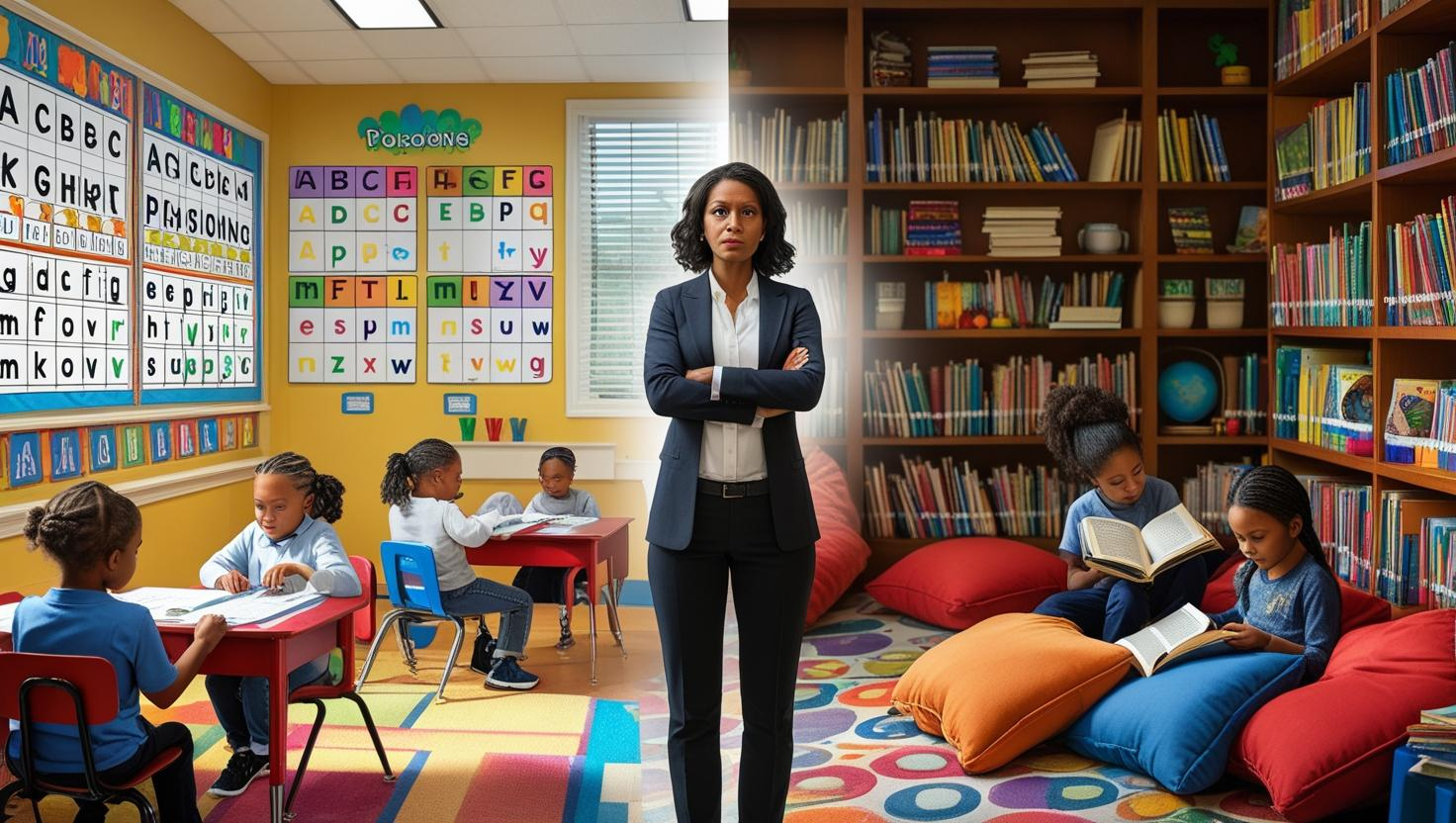By the 1990s and 2000s, educators were caught in a tug-of-war. Phonics advocates insisted on explicit instruction in decoding skills, while supporters of whole language championed immersion and meaning. To reconcile these extremes, many schools adopted what came to be called “balanced literacy.”
Balanced literacy aimed to blend the best of both worlds: the structure of phonics with the rich meaning-making of whole language. But in practice, it often satisfied neither camp fully—and left many students struggling.
What Was Balanced Literacy?
Balanced literacy was not a single method, but a flexible framework. It generally included:
- Guided reading groups where students read leveled texts
- Some direct phonics instruction, though often limited or inconsistent
- Opportunities for free reading and writing for personal expression
- Use of authentic literature and teacher-led discussions
The goal was to provide both skills and meaning, structure and creativity.
Why Did Schools Choose Balanced Literacy?
Balanced literacy seemed like a practical compromise in a heated debate. It promised to:
- Satisfy critics on both sides of the phonics vs whole language argument
- Offer teachers flexibility to adapt instruction to student needs
- Reduce controversy and political pressure on curriculum choices
However, the lack of clear, consistent guidelines meant that implementation varied widely.
The Problems with Balanced Literacy
Balanced literacy often ended up leaning too heavily toward whole language ideals, with phonics instruction sometimes being superficial or optional.
Common issues included:
- Phonics taught sporadically, without a systematic scope and sequence
- Overreliance on leveled readers that didn’t always support decoding
- Insufficient attention to struggling readers who needed explicit instruction
- Confusion among educators about how much phonics to teach
These shortcomings contributed to continuing literacy challenges in many classrooms.
The Continuing Debate and Legacy
By the 2010s, growing evidence from cognitive science and the Science of Reading movement challenged balanced literacy’s efficacy.
Many educators and policymakers began pushing for “structured literacy” — explicit, systematic phonics combined with comprehensive language instruction.
Balanced literacy’s legacy is mixed: it softened the extremes of past battles but failed to solve the fundamental issues in teaching reading.
For Writers: Why Balanced Literacy Matters
Understanding balanced literacy helps writers see how readers’ foundational skills vary widely.
- Some readers have strong decoding skills but lack fluency or comprehension
- Others may rely on context clues and guesswork, reflecting whole language influences
- The range of reading abilities affects how audiences approach complex texts
Knowing these differences can inform clearer writing and more inclusive storytelling.
What’s Next
The latest chapter in reading instruction history is the “Science of Reading” and the rise of structured literacy programs. This approach emphasizes brain science and explicit teaching to fix what previous methods left unresolved.
In the next article, we’ll explore how the Science of Reading is reshaping classrooms today—and what that means for writers and readers alike.







